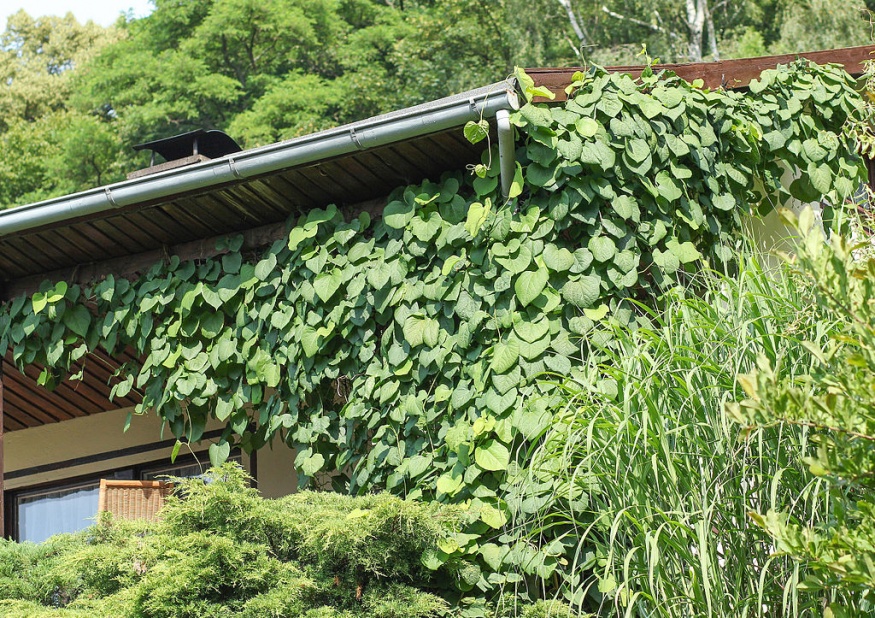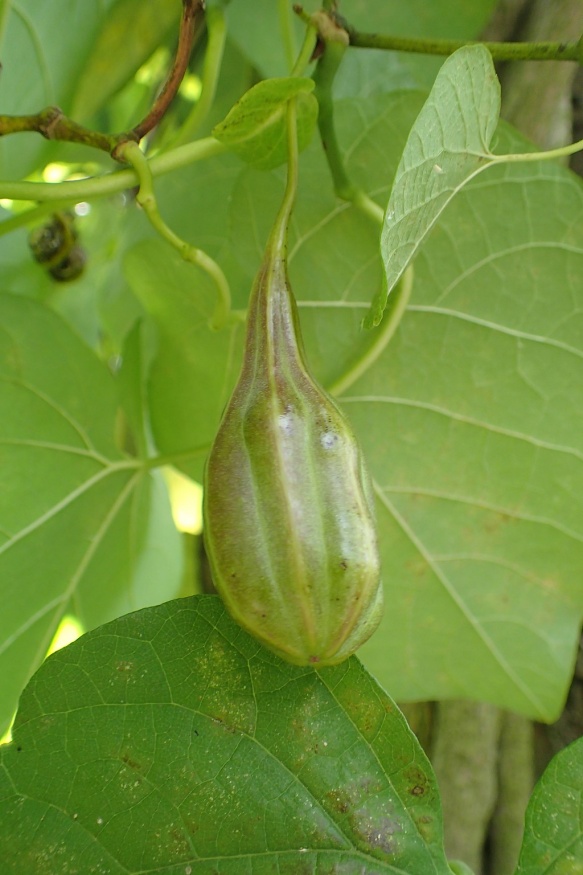Pipevine

Other Botanical Names: Aristolochia durior; Isotrema macrophyllum
Family: Aristolochiaceae Native to: Eastern North America
Hardy to zone: 4
Eco benefits: attracts pollinators, pest/disease resistance
Natural habitat: mountains, waters edge, inner forests
Shapes: vine
Height: 15-30ft
width: 15-20ft
Growth rate: fast
Unique attractions: flowers
Tolerances: air pollution, heavy pruning, pest & desease, deer resistant, black walnut
Common uses: landscaping, cityscape, naturalized plantings
Insects: aphids
Light: full sun, partial shade
Soil: moist and fertile, well drained, tolerates heavy clay, ph adaptable, sandy
Reproduction type: monoacious
Pipevine (Aristolochia macrophylla) is a vigorous twining vine native to eastern North America; noted for it's large heart shaped leaves and oddly unique flowers. Pipevine can be found in rich woods, riverbanks, and mountains. Once twined upon a vertical surface, it can climb up to 30ft. and tolerant of a variety of soil conditions. Pipevine's coarse texture provides nice contrast and variety to garden designs. Screening or Accent for trellises, pillars, fences, and walls are popular uses.

Leaves are large, dark green, and heart shaped, and mature stems are woody with Smooth light to dark brown bark. Uniquely fragrant Yellowish green and purple flowers are present March to June. They Flare at the mouth forming three lobes and resemble a Dutch smoking pipe. Considered inconspicuous, the flowers are not easily seen and usually covered by foliage. Flowers have a peculiar way of assisting pollination. Hairs within them temporarily trap insects, collecting their pollen residue, then releasing them with the new flower residue after fertilization. Black to coppery brown fruit follow flowering and ripen from August to September. Aristolochia macrophylla is Similar to A. tomentosa, except tomentosa is mostly hairy.

Pipevine is an Important host plant for the swallowtail butterfly. Leaves provide food for the caterpillars, and the butterflies feed on Pipevine flower nectar. The vine is is Pollution, pest, deer, and disease tolerant. It's also tolerant of heavy pruning and can be cut back in late winter to control growth.
References
Lady Bird Johnson Wildflower Center. (2016).Aristolochia macrophylla. Retrieved fromhttps://www.wildflower.org/plants/result.php?id_plant=arma7
Missouri Botanical Gardens. (n.d.). Aristolochia macrophylla. Retrieved from https://www.missouribotanicalgarden.org/PlantFinder/PlantFinderDetails.aspx?kempercode=j410
NC State Extension. (n.d.). Aristolochia macrophylla. Retrieved from https://plants.ces.ncsu.edu/plants/aristolochia-macrophylla/
University of Florida. (n.d.).common name: pipevine swallowtail, blue swallowtail scientific name: Battus philenor. Retrieved from http://entnemdept.ufl.edu/creatures/bfly/pipevine_swallowtail.htm